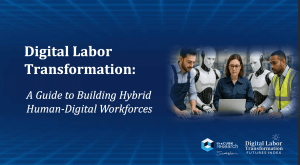This research is part of five reports looking at the alignment of business and technology within a Digital Business Platform. Other reports will focus on Digital Feedback Loops, how the API is the Product, Rapidly Building and Deploying Applications, Automated Deployments, and Controlling the Operational COGS.]
Premise: At the core of the Digital Business Platform is a continuous flow of data that provides insight into market behaviors, improves product and services in real-time, and becomes the feedback loop that connects user-experience and business decision-making.
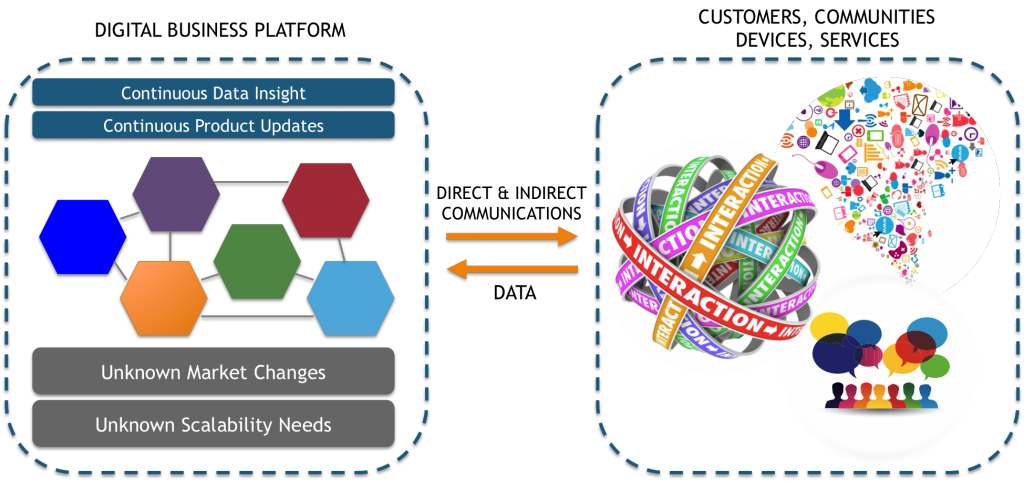
Developing a Digital Business Platform
As more companies create a more digital-centric interaction with their marketplace, it becomes critical to have a Digital Business Platform to manage those engagements. These platforms are built around five key attributes:
- Provides the ability to rapidly develop and test new applications, as well as frequent updates to those applications.
- Enables automated deployments of those applications, as well as the deployment of additional services to enhance the delivery of applications.
- Establishes a framework where the API (or series of API) becomes the centerpiece of how the product is consumed by the marketplace.
- An understanding that operations is the cost that can be aggressively automated to reduce costs within the platform.
- Core to the platform is the ability to establish data feedback loops which can not only help improve the engineering of the product/service, but allow contextual data to be shared across the organization.
VIDEO: Richard Haigh, Operations Manager at Paddy Power Betfair, talks about how he shares data from his customer-facing sites across various groups in the business to get a broad range of perspectives about the business.
Creating Data Feedback Loops
At the heart of digital business and digital interactions is a robust ability to generate and capture data, process data in batch or real-time, and be able to format it in ways that can be broadly shared. Data within the systems is able to capture insights from things, as well as people.
The ability to create data feedback loops that are valuable to both business teams and technology teams is reliant on three core elements, which are critical for IT organizations to get right in order to succeed in the digital economy.
- Instrument the System to Collect and Analyze Data.
- The Digital Feedback Loop aligns to the Observe, Orient, Decide, Act (OODA) model.
- Data Insight is contextual. It must be shared across business groups.
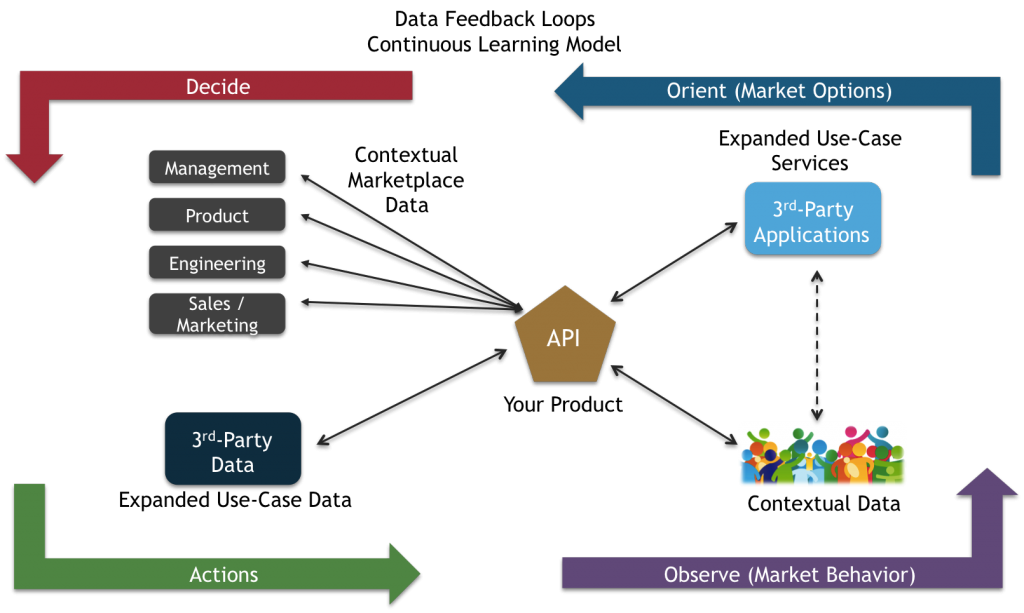
Instrument the System to Collect Data – Analyze and Optimize at All Points within the System.
Traditional IT applications were always designed to be monitored for availability or performance, but very few were instrumented to collect data about the application, the interactions with end users, or other systems. By building telemetry capabilities into all aspects of any application, the business is able to determine how it behaves today, where it can be optimized to deliver better experiences, or where it needs significant improvement in the context of the value it provides, not the resources it consumes. The modern digital business platform must consider data collection and analysis to be a core service of the platform.
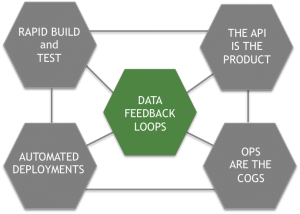
Architects of digital business applications must expect to collect this data in real-time and have a framework in place to be able to build a model of how applications should behave. The modern digital business platform must consider data collection and analysis to be a core service of the platform. This platform-based approach allows the technical teams and the business teams to determine where modifications can be made at both a technical level and a business level.
This new model of collecting data can be difficult for many IT organizations to understand, especially if they have primarily been focused on internal facing applications. Today, only 34% focus on outward-facing customer/commercial applications. Because this functionality needs to be embedded into the digital business platform, high-performing IT organizations are 2.1x more likely than underperformers to increase their spending on platform as a service (PaaS) and mobile backend as a service (MBaaS). (source: 2016 State of IT – Salesforce Research)
Many data-centric platforms are now available to assist companies in collecting data about their digital platform and applications. Some of these include AppDynamics, DataDog, NewRelic for application and infrastructure analytics, and Loggly, SignalFX, and SumoLogic for log-centric analysis. Intel’s SNAP framework provides similar functionality for end-to-end data center telemetry.
The Data Feedback Loop Allows Continuous Awareness and Improvement Opportunities.
The focus on availability and performance have always been a hindrance to rapid change in IT applications. Monitoring can identify problem areas, but enacting solutions to most commercial applications requires an outage window, which can adversely affect customer experience. As more companies build customer-facing applications, several advancements are helping to eliminate this challenge:
- Digital Business applications are being built using more modular architectures, often called “microservices”, which allow smaller parts of an application to be updated independently of other services within the application.
- Smaller parts of applications can be continuously integrated and deployed (CI/CD) into production environments without requiring scheduled outage windows. DevOps teams are better aligned and coordinated to manage these updated with 60x less risk and 200x greater frequency. (source: State of DevOps Report 2015)
- Staggered rollouts, called “blue / green deployments” can be coordinated with a cloud native platforms to validate changes without impact usability of applications.
Video 1: From DockerCon 2015, travel company Orbitz has been able to build a better digital experience for their customers using more modular architectures and better collection of real-time data.
Digital Insight is Contextual, Hence Data must be Shared Across the Business.
In the past business dashboards and technology metrics were often isolated, giving different parts of the business a different view of customers and the marketplace. But as the face of any company becomes more digital, it is critical that these teams are able to share information about the marketplace and digital interactions. As data is more readily shared between teams, they can understand the context of the interaction between customers, devices and the business. For example, the technology team may see a spike in traffic at 8am and look to improve application responsiveness, but the business team may look at this as an opportunity to create new services to simplify the morning shift for their customers in New York.
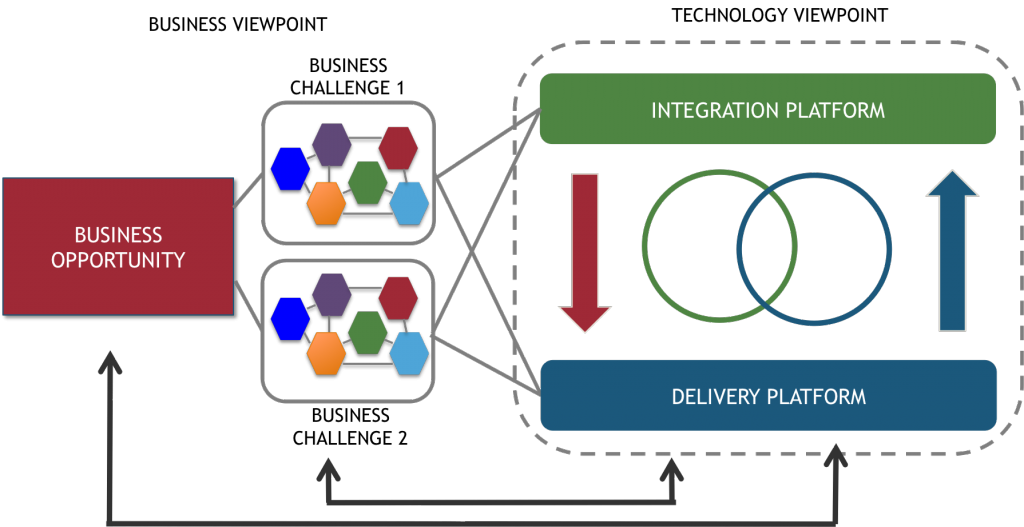
The ideal Digital Business Platform begins with the broad business opportunity. This opportunity is then broken down into smaller business challenges (e.g. measuring regional differences, measuring responses to pricing variables), which can be aligned to an integration and delivery platform. As data is collected by the technology platform and digital applications, it can be shared with both the business and technology teams in a context-specific manner. This not only allows these teams to create a shared view of the market, but a set of language that can span between the two types of teams.


